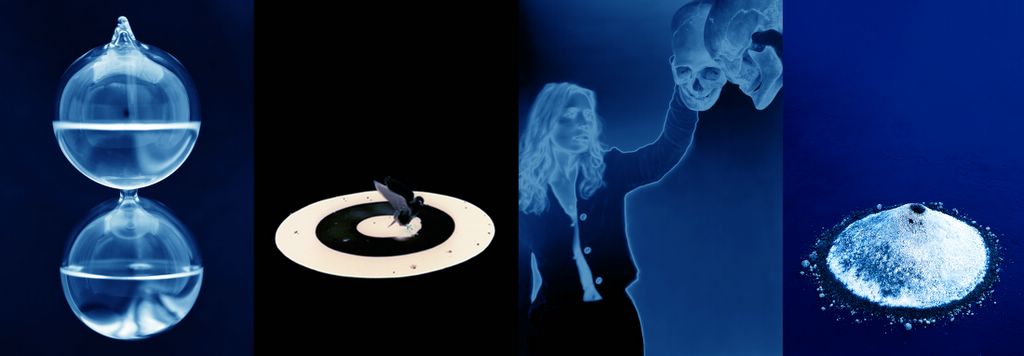
Spirit of Discovery
International Art and Science Conference
Foundation of the Art, Science and Technology - Observatory
D O V E B R A D S H A W
Time and Material
Church of the Convent of Santo AntÓnio
Trancoso, Portugal
http://www.asa-art.com/facto.html
email: facto@asa-art.com
Open Monday through Sunday 10 -6 PM, May 18-July 18, 2006
Long disregarded by artists intent on asserting control over their materials, indeterminacy is at the heart of Dove Bradshaw’s work. For her it is the inescapable frame of reference in reality. By enlisting the unpredictability of life forces in art she introduced indeterminacy in her work in a 1969 installation composed of targets and live birds. Her equally early fusion of scientific exploration with art practice, is now broadly embraced in the Science/Art movement. Under this rubric, she made pioneering two and three-dimensional works with inherently unstable materials, such as acetone, mercury and sulfur. Atmospheric conditions serve as catalysts for her “weathering” works, which slowly capture transient chemical transformations in silver, marble and pyrite. In other works, Bradshaw plots the gradual erosion of salts and stones with water as the transformative agent. One of Bradshaw’s most frequently used materials, time, is also always one of her key subjects. Her work is represented in many American and European museums, and she exhibits internationally on a regular basis. Six Continents, in which water erodes salt brought from each of the continents, will be shown this fall in the 2006 Gwangju Biennale in South Korea. In June for the Second International Free Forum Bolognano, Italy the Baronessa Lucrezia Durini commissioned Bradshaw’s Radio Rocks as a permanent installation. Acting as tuners galena and pyrite crystals will draw in local, short wave and outer space signals echoing the Big Bang.
The artist’s late friend and mentor, composer John Cage observed that, “The work of Dove Bradshaw works with our changing conceptions of time and space …¦ She's involved, as we are in our lives, because of art, with an almost scientific procedure, so that she can experiment in such a way as to prove something. And she can subject us to the results of her experiments, which can open us to the life we are living.”
Produced with Renaissance Press for this exhibition, four cyanotypes contain images suggesting human, avian and geological time. Shown vertically as a timer, the first cyanotype documents a sculpture by Bradshaw designed as both clock and a level depending on position. This image is printed in two versions for the Trancoso exhibition, one fixed and the other unfixed and thus destined to change during the course of the exhibition. The second cyanotype consists of an image of two mating birds taken by the artist during her 1991 installation of Plain Air at PS 1 in New York. Anticipating her own end, the third, a self portrait with skull, is titled You Skull See, a phase borrowed from Finnegans Wake. The fourth is detail from her exhibition Six Continents, showing the mound of North American salt after a month’s re-crystallization.
The centerpiece of the Trancoso exhibition is Eurasia, which is one of the components of the Six Continent installation. For this occasion salt from Portugal will be used for the sculpture. Water from a funnel, calibrated to release seven drops per minute, will indeterminantly cause continuous re-crystallization throughout the exhibition.